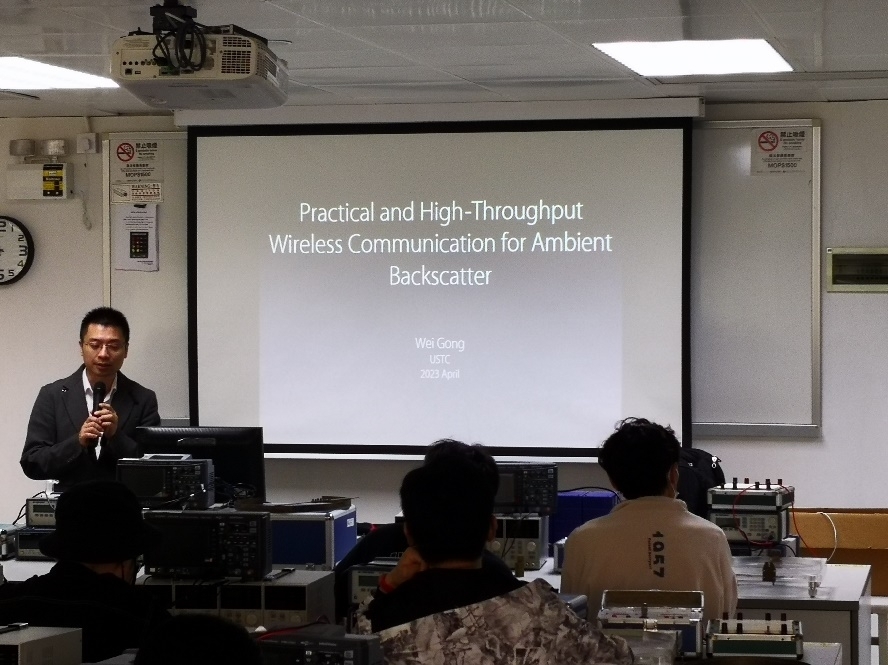In order to enhance the understanding of advanced technologies in the field of wireless communications among students in the School of Computer Science and Engineering, an academic lecture was held on April 25, 2023, in classroom C406 of Building C. Professor Gong Wei, a nationally appointed young expert and a long-term researcher in the areas of Internet of Things architecture, technology, and system, was invited to give a presentation to the students. He has proposed a multi-source, multi-hop, multi-flow, and highly available passive architecture around the world's cutting-edge pervasive passive network direction, established a high-throughput passive transmission model, and constructed a robust and efficient passive network protocol stack. His representative work has been published in top international conferences and journals, such as ACM MobiCom, IEEE/ACM ToN, and more than 100 papers. He has won the best paper award at international conferences, such as IEEE GlobeCom, ICC, and DCOSS, and has led national-level key projects funded by the National Natural Science Foundation of China. He also serves as a program committee member for well-known international conferences, such as PerCom, HotMobile, and an editorial board member of SCI journals. More than 40 teachers and students from the School of Computer Science and Engineering attended the event.
In this event, Professor Gong Wei gave a speech entitled "Practical and High-Throughput Wireless Communication for Ambient Backscatter." With the rapid development of IoT technology, the transmission technology of IoT is moving from the active era to the passive era. The report introduced the latest progress in passive WiFi communication and demonstrated a new high-throughput passive WiFi system, CAB. This system can achieve high-throughput passive transmission by only using uncontrolled WiFi signals in the environment as a stimulation source. The overall system is compatible with WiFi3/4/5/6 protocol families. Through testing, it can achieve a maximum aggregated throughput rate of 340 Mbps. As the first passive WiFi transmission system to achieve near-Shannon limit (97%), it also has the main features of high throughput and ultra-low power consumption, and is expected to become the main communication method for future passive transmission and network.

Prof. Gong Wei was giving the speech
